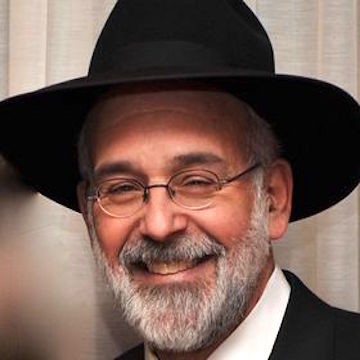Rabbi David Etengoff
342 results total, viewing 1 - 10
|
Moshe Rabbeinu’s accomplishments are legendary, his leadership was extraordinary, and his intellect was nearly unparalleled. Moreover, the level of nevuah he achieved was different in kind and …
more
By Rabbi David Etengoff
|
7/24/24
|
|
Our parasha, Balak, contains one of the most famous pasukim in the Torah: “How goodly are your tents, O Ya’akov, your dwelling places, O Yisrael!”
In his Commentary on the …
more
By David Etengoff
|
7/24/24
|
|
Our parasha, Sh’lach, contains a pasuk with a puzzling phrase: “These are the names of the men Moshe sent to scout the Land, and Moshe called ( vayikra Moshe ) Hoshea the son of Nun, …
more
By Rabbi David Etengoff
|
6/26/24
|
|
The beginning of our parasha, Beha’alotcha, discusses the kohane’s daily mitzvah to light the Menorah. The Torah then describes the construction of the Menorah: “This was the form …
more
By Rabbi David Etengoff
|
6/19/24
|
|
The beginning of our parasha, Emor, focuses upon a variety of laws that pertain solely to the kohanim. From a halachic perspective, they have little to do with the majority of the Jewish people, as …
more
By Rabbi David Etengoff
|
5/15/24
|
|
One of the most celebrated mitzvot of our parasha, Kedoshim, is “v’ahavta l’reicha kamocha (and you shall love your fellow Jew like yourself).”
Rashi, citing the Midrash …
more
By Rabbi David Etengoff
|
5/8/24
|
|
Our natural inclination at this time of the year is to focus upon the phrase, zacher l’yetziat Mitzraim (a remembrance of the Exodus from Egypt. This is the case, since one of the major mitzvot …
more
By Rabbi David Etengoff
|
4/17/24
|
|
T he primary focus of our parasha, Tazria, is the illness known as tzaraat . In his commentary on the Torah, the Rashbam presents the unique nature of this disease:
All of the sections dealing …
more
By Rabbi David Etengoff
|
4/10/24
|
|
L ike much of sefer Vayikra, our parasha, Tzav, focuses on the korbanot . Accordingly, the second verse presents the mitzvah of the korban olah:
“Command ( tzav ) Aharon and his sons, …
more
By Rabbi David Etengoff
|
3/27/24
|
|
This Shabbat we will read Parashat Zachor which, according to the Shulchan Aruch, is a Torah-based mitzvah. In addition, it enables us to fulfill two of the three Taryag Mitzvot associated with …
more
By Rabbi David Etengoff
|
3/20/24
|

